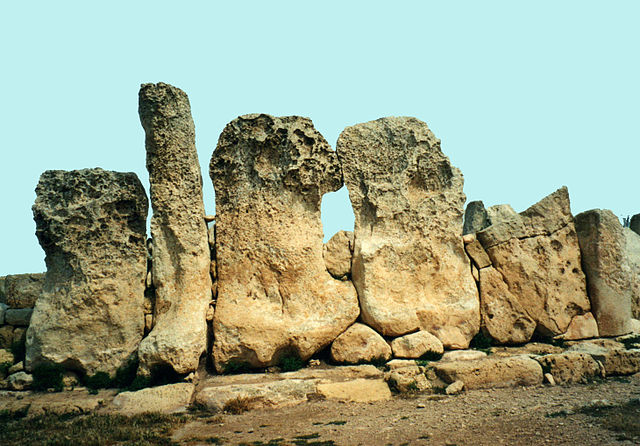
Continuing the circuit of the outer wall, we see several intriguing, and very large, wall stones. Their naturalistic shapes are in contrast to the obviously cut and polished, uniformly rectangular stones of the temple facade.
Note the triangular carved "sockets" at the bottom of the large stones. (Their shape actually seems to vary between a triangle and a semicircle.) What could be their purpose? Perhaps they received poles, which could have been used for transport, or for helping to lever the rocks into place. However, the cut-off corners between the slabs do not seem consistent with this hypothesis.
Perhaps the "sockets" tell us something about how the rock was quarried. By inserting wooden pegs into these sockets while the slabs were still attached at the base, one could wet, burn, hammer, or lever them to help detach the slab. Here is another example from Hagar Qim, and a third example from Tarxien.
Malta. 1998.
|
|
|
|
|